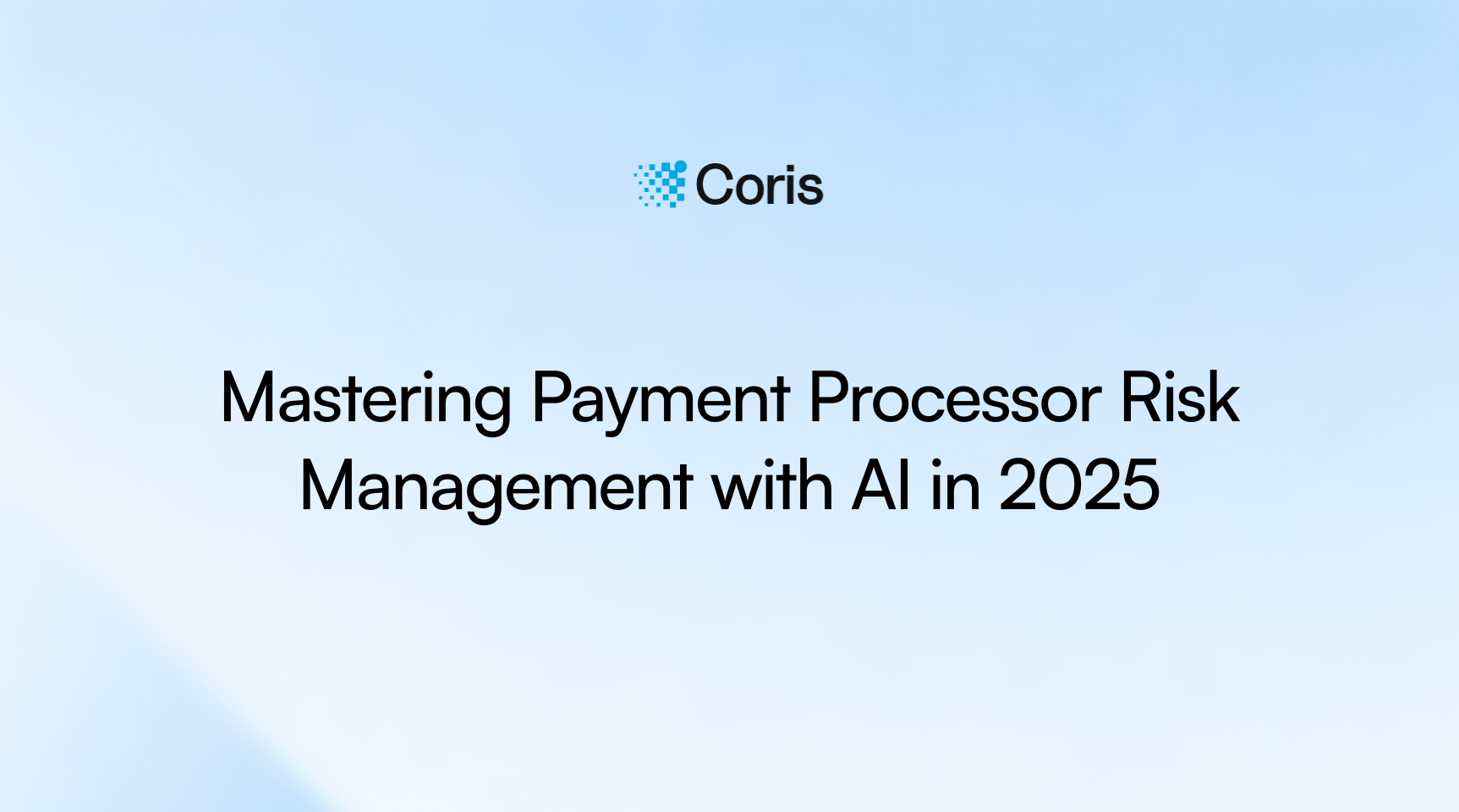Stop Risky Merchants with Automated Underwriting in 2025
Learn how automated merchant underwriting tools stop risky merchants, reduce fraud, and help you scale your platform safely in 2025.
Discover how AI is transforming payment processor risk management in 2025 — from fraud prevention to compliance — with adaptive, real-time intelligence.

Payment processing is no longer just about moving money — it’s about managing risk at machine speed. As digital transactions surge, fraud and compliance challenges are growing in both sophistication and scale. Static, rule-based systems — once the industry standard — can’t keep up with adaptive fraud networks and evolving regulatory frameworks. By 2025, AI-driven risk management has shifted from a nice-to-have to a core requirement for survival and growth.
The question isn’t whether AI should be part of your risk strategy — it’s how deeply it should be embedded across the merchant lifecycle.
Traditional risk management relied on predefined rules: if a transaction triggered a condition, it got flagged for manual review. That approach is too rigid for today’s high-volume, high-speed environment.
Key limitations of rule-based systems include:
Agentic AI platforms change the equation. These systems continuously learn and act — not just detect anomalies but respond to them in real time. They process vast datasets from multiple signals — merchant behavior, transaction context, network intelligence — to generate dynamic, predictive insights that prevent fraud before it happens.
AI isn’t just transforming transaction monitoring — it’s reshaping every stage of the merchant risk process:
Underwriting is traditionally a bottleneck. AI automates Know Your Business (KYB) checks, cross-referencing merchant identities, ownership structures, and historical data to flag risks instantly.
Fraud doesn’t wait for batch reviews. AI models monitor transactions continuously, identifying velocity spikes, payment anomalies, or synthetic identities as they happen.
Merchant risk is dynamic. AI tracks changes in merchant behavior over time, combining fraud prevention with AML and PCI compliance checks. A single, unified system replaces multiple tools, cutting both cost and complexity.
AI-first risk systems are not just about fraud prevention — they unlock operational and financial advantages:
Building an AI-native risk platform in-house requires deep expertise, significant resources, and constant iteration. For most payment processors, partnering with a specialist is the smarter move.
Platforms like Coris.ai deliver end-to-end merchant risk intelligence — onboarding, underwriting, real-time monitoring, and compliance — all within a single, agentic infrastructure. With customizable risk models, integrations with major processors, and predictive fraud detection, Coris enables teams to move faster, act smarter, and focus on growth rather than firefighting.
By mid-2025, risk management isn’t just a workflow — it’s part of the infrastructure that powers payments. AI-driven systems bring the speed, adaptability, and precision needed to fight modern fraud, reduce operational overhead, and build lasting trust.
The leaders in payment processing will be those who replace manual, reactive tools with dynamic, agentic intelligence that scales.